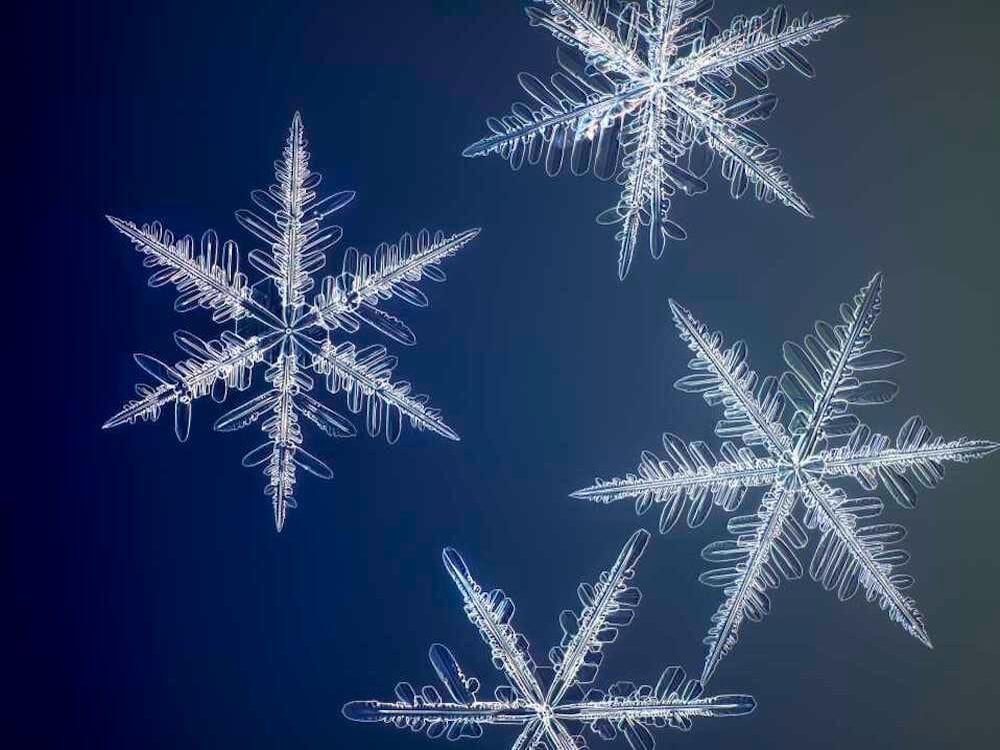
The first chill of a winter storm is enough to send most people indoors, but not Nathan Myhrvold. The colder the weather, the better his chances are of capturing a microscopic photograph of a snowflake. Now, nearly two years in the making, Myhrvold has developed what he bills as the "highest resolution snowflake camera in the world." Recently, he released a series of images taken using his creation, a prototype that captures snowflakes at a microscopic level never seen before.
Myhrvold, who holds a PhD in theoretical mathematics and physics from Princeton University and served as the Chief Technology Officer at Microsoft for 14 years, leaned on his background as a scientist to create the camera. He also tapped into his experience as a photographer, most notably as the founder of Modernist Cuisine, a food innovation lab known for its high-resolution photographs of various food stuffs published into a five-volume book of photography of the same name that focuses on the art and science of cooking. Myhrvold first got the idea to photograph snowflakes 15 years ago after meeting Kenneth Libbrecht, a California Institute of Technology professor who happened to be studying the physics of snowflakes.
"In the back of my mind, I thought I'd really like to take snowflake pictures," Myhrvold says. "About two years ago, I thought it was a good time and decided to put together a state-of-the-art snowflake photography system...but it was a lot harder than I thought."
Photographing snowflakes is nothing new. In the late 1880s, a Vermont farmer by the name of Wilson Bentley began shooting snowflakes at a microscopic level on his farm. Today he's considered a pioneer for his work, which is part of the Smithsonian Institution Archives. His photography is considered the inspiration for the common wisdom that "no two snowflakes are alike."
More than a century later, the field of snowflake photography has continued to evolve by leaps and bounds, which is evident in the high-res images that Myhrvold has produced with his own camera.
In simple terms, the system Myhrvold developed is comprised of one part microscope and one part camera, but with a number of parts that work in tandem to complete the arduous task of capturing an image of a snowflake, a subject that's not only miniscule (most snowflakes measure less than a half-inch in diameter) but also quick to melt. In fact, a snowflake's tendency to disintegrate was one of the biggest challenges Myhrvold had to overcome with this project. His solution: equipping his 50-pound camera system with a thermoelectric cooling system, a carbon fiber frame and LED lights, which give off less heat than standard lights. Every single part of his Frankenstein-esque device, which stands at about five feet in height off the ground when placed on a table, was built using materials that are less likely to cause melting or sublimation of the subject matter.
"Light could melt the snowflake, so I found a company in Japan that makes LED lights for industrial purposes," he says. "My camera's flash is one-millionth of a second and a thousand times faster than that of a typical camera flash."
Obviously, some locales are better suited for snowflake photography than others. For example, snowflakes in the Pacific Northwest, where Myhrvold is based, aren't nearly cold enough and either melt or sublimate (when ice turns to gas) too quickly, while on the East Coast, they're too wet due to the humidity in the air, which can cause snowflakes to stick together. So, he ventured to an even higher latitude with perfect conditions — Timmins, a town in northeastern Ontario, Canada.
"Somewhere between negative 15 degrees and negative 20 degrees Fahrenheit is the snowflake-shooting sweet spot," he says.
Myhrvold also had to figure out how to physically capture a snowflake. (It's not quite as simple as hoping that the perfect snowflake just so happens to fall into your mittened hand.) He quickly learned that catching them on a glass microscope slide wouldn't work; glass is a known insulator. But an artificial sapphire slide, made of the same crystal material as one would find in a high-end watch, had a lower thermal conductivity ratio than glass, making it the perfect material to gather specimens.
In order to get the snowflake on the sapphire slide, he first had to catch one. A piece of foam board that he painted black and clamped onto to the end of a mop handle did the trick. Once enough snowflakes fall onto the board, Myhrvold does a quick visual inspection of the specimens before deciding which one is best suited for his purposes. He then transfers it over to the sapphire slide using a small sable brush, similar to what watercolorists use when painting the finest of details.
"Only one out of every thousand snowflakes is perfect enough to photograph," he says. "Often, they'll stick together, so you can't take too much time and you have to pick the best one you can quickly transfer. You really want to get them on the microscope right away."
Once safely on the slide, he focuses his microscope to take the photograph, changing the exposure one micron at a time. (For reference, the width of a human hair measures approximately 70 microns.) On average, Myhrvold photographs each snowflake more than 100 times, or as many times as he can before the snowflake starts to melt. Using specialized computer software, Myhrvold combines multiple photographs of a single specimen to create the final photograph.
"That photo [is usually the result of] 100 photographs put together using computer software," he says. "You have to take many photos in order to get a high enough resolution, because many photos put together allows you to have enough depth of field to see an entire snowflake very sharply."
Kenneth G. Libbrecht, a professor of physics at CalTech who has extensively studied the physics and pattern formation of ice, and whose work was what inspired Myhrvold to pursue this project in the first place, is no stranger to the challenges of building a high-res snowflake camera. He too has created a similar device, which he uses for his own research purposes. Besides himself, he says only Myhrvold and a Canadian photographer named Don Komarechka have accomplished the feat of photographing snowflakes at such a micro-level.
"People sometimes ask me how [my camera] works or what does it look like, and it's very hard to answer because it's kind of built as a garage-like project," Libbrecht says. "There's no blueprint; you throw it together as you go."
Treading into this unknown territory, Libbrecht says he's not certain what these high-res photographs will mean in the study of snowflakes. "I don't know what one will discover with this," he says. "When you look at pictures, you see things that you didn't know were there. It's more important to photograph a lot of snowflakes than just to get a high resolution photo of one, but that's important too. It's hard to predict what you'll discover."
Myhrvold adds that it's taken a lot of "trial and error" to get his project to the point where it is now. And even now, he's still tinkering with different elements to add to his snowflake photography system.
"[I'm] modifying it right now and adding new features," he says. "Our problem at the moment is that now that winter has started, Canada is locked down, so I'm using this time to upgrade things."
One possible upgrade Myhrvold mentions is someday hooking his system up to a 3-D printer, but one minor problem exists: "There's currently no printer that could print at the resolution of a real snowflake," he says. "But if you increased it to the size of a dinner plate, absolutely."
Sounds like a worthwhile project to us.
Prints of Myhrvold's snowflake photography are available at the Modernist Cuisine Gallery.
Jennifer Nalewicki is a Brooklyn-based journalist. Her articles have been published in The New York Times, Scientific American, Popular Mechanics, United Hemispheres and more. You can find more of her work at her website.
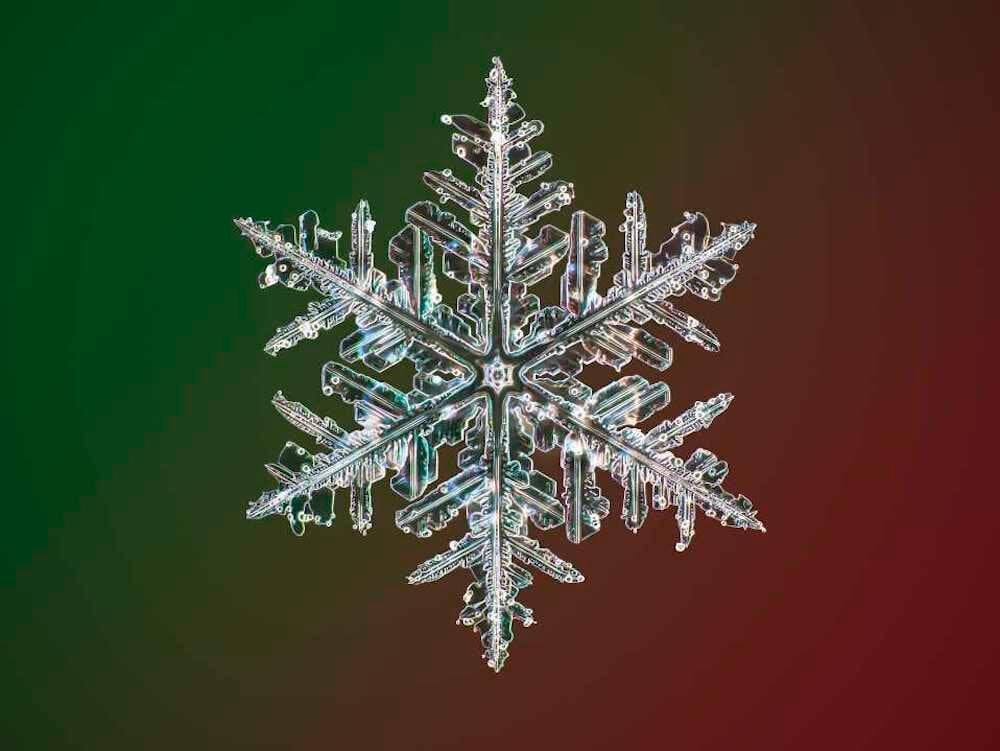
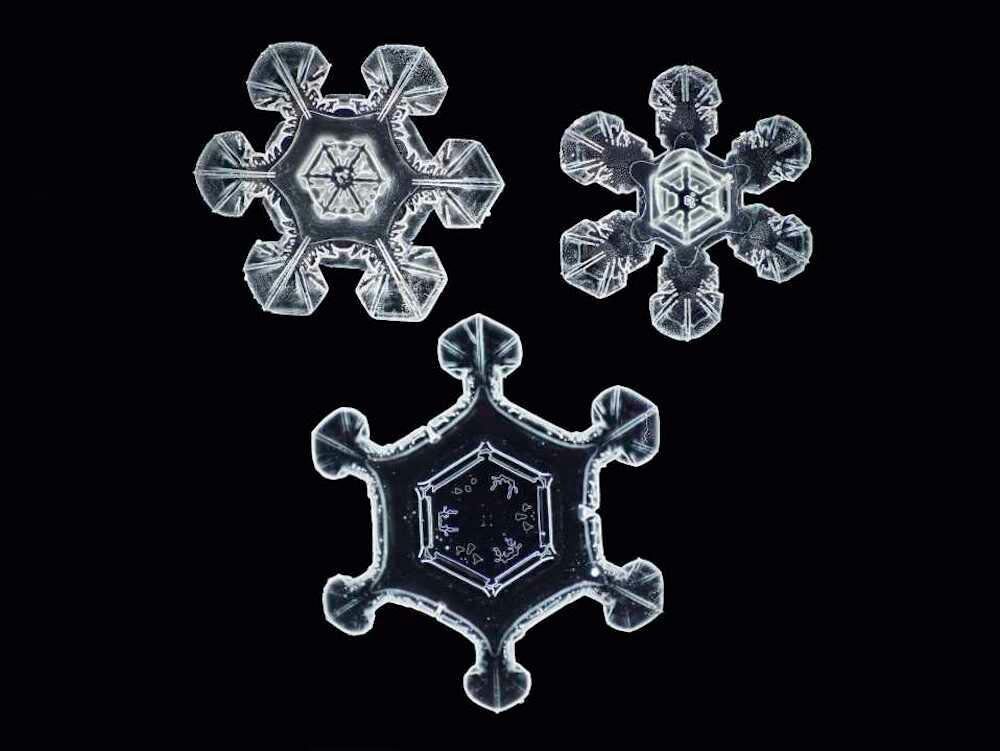
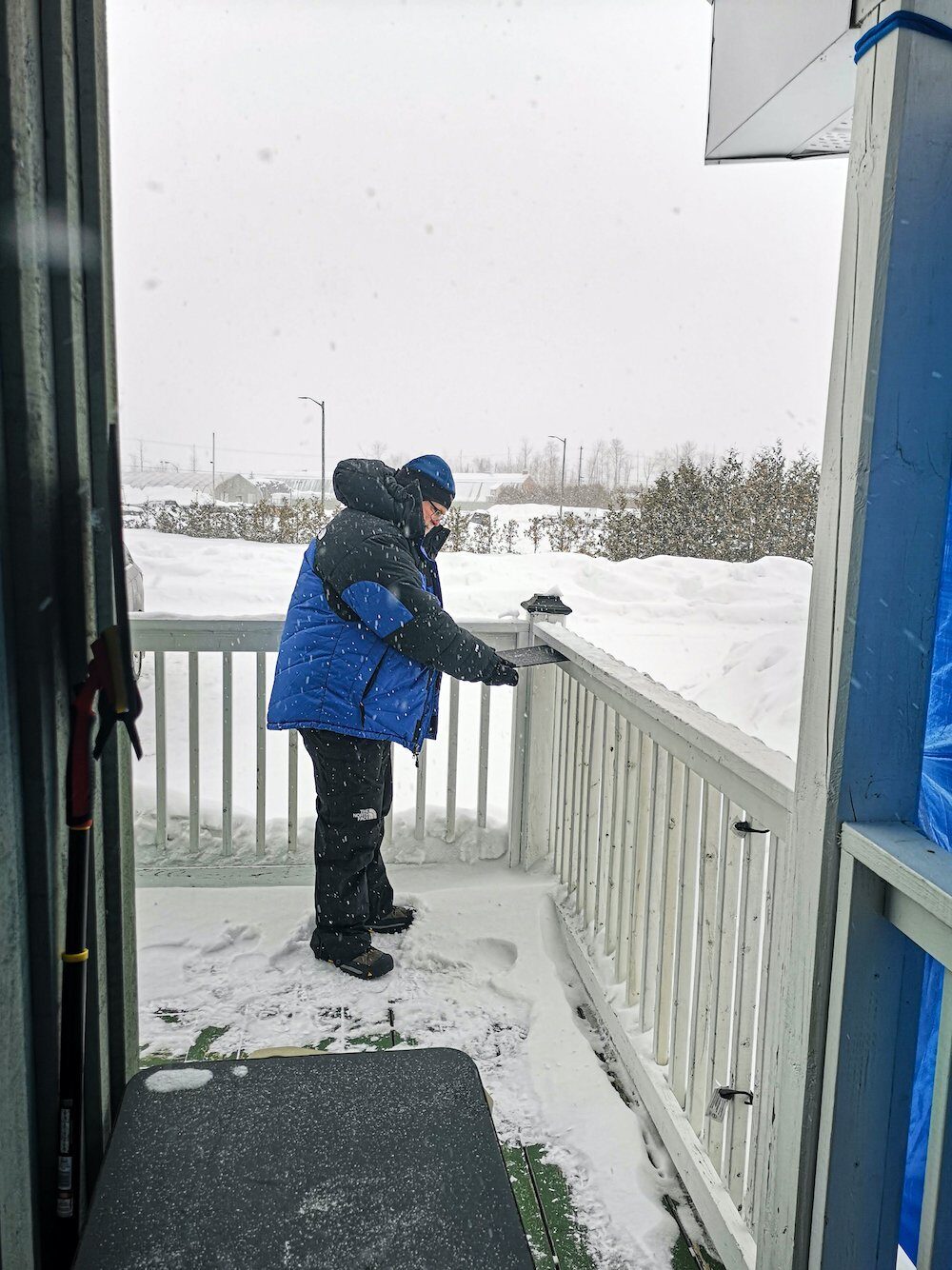
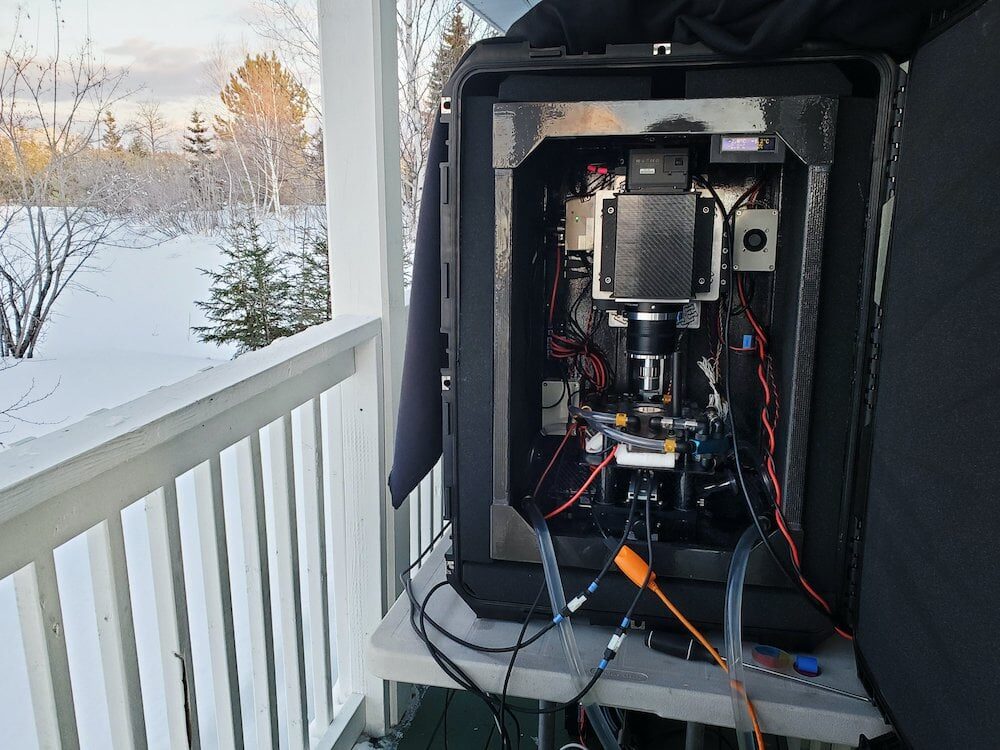



Reader Comments
if you have not watched it before, it is mesmerizing.
[Link]
[Link]